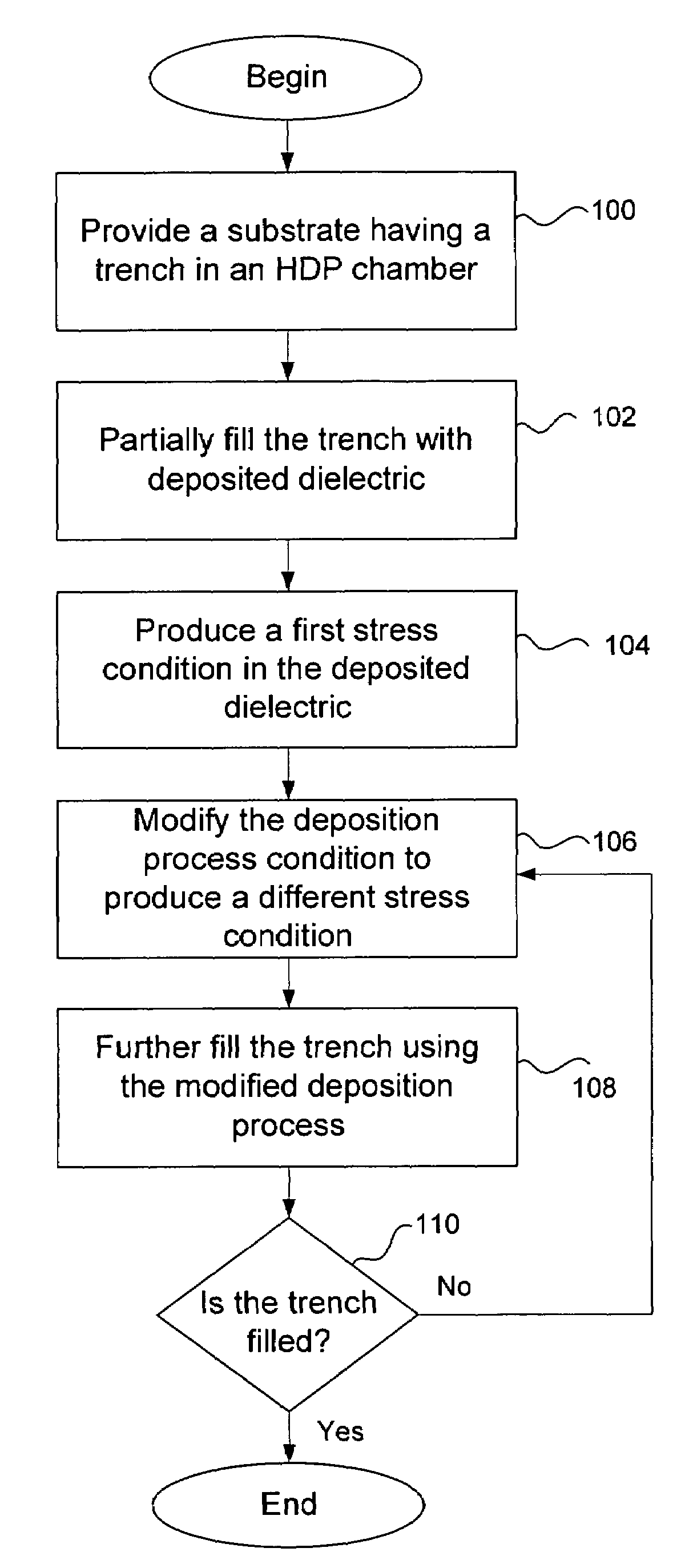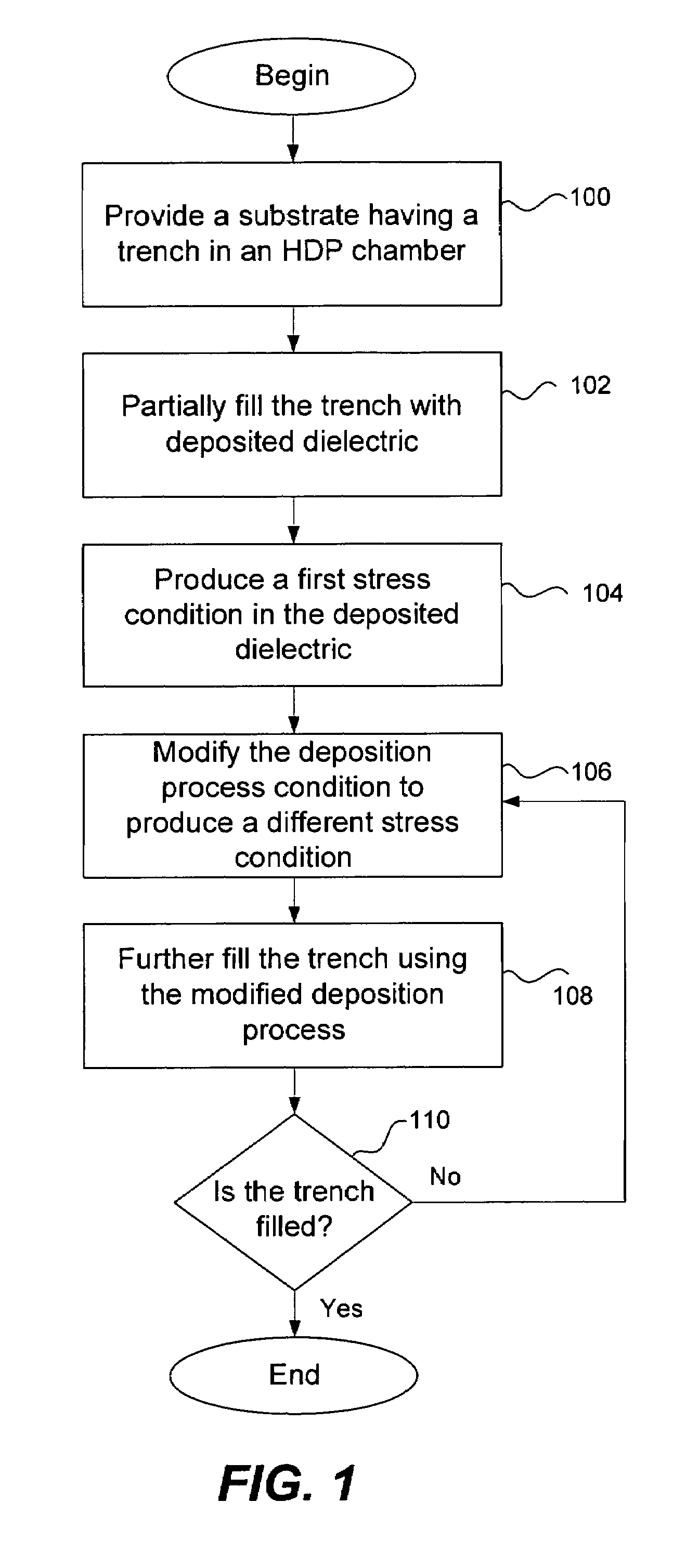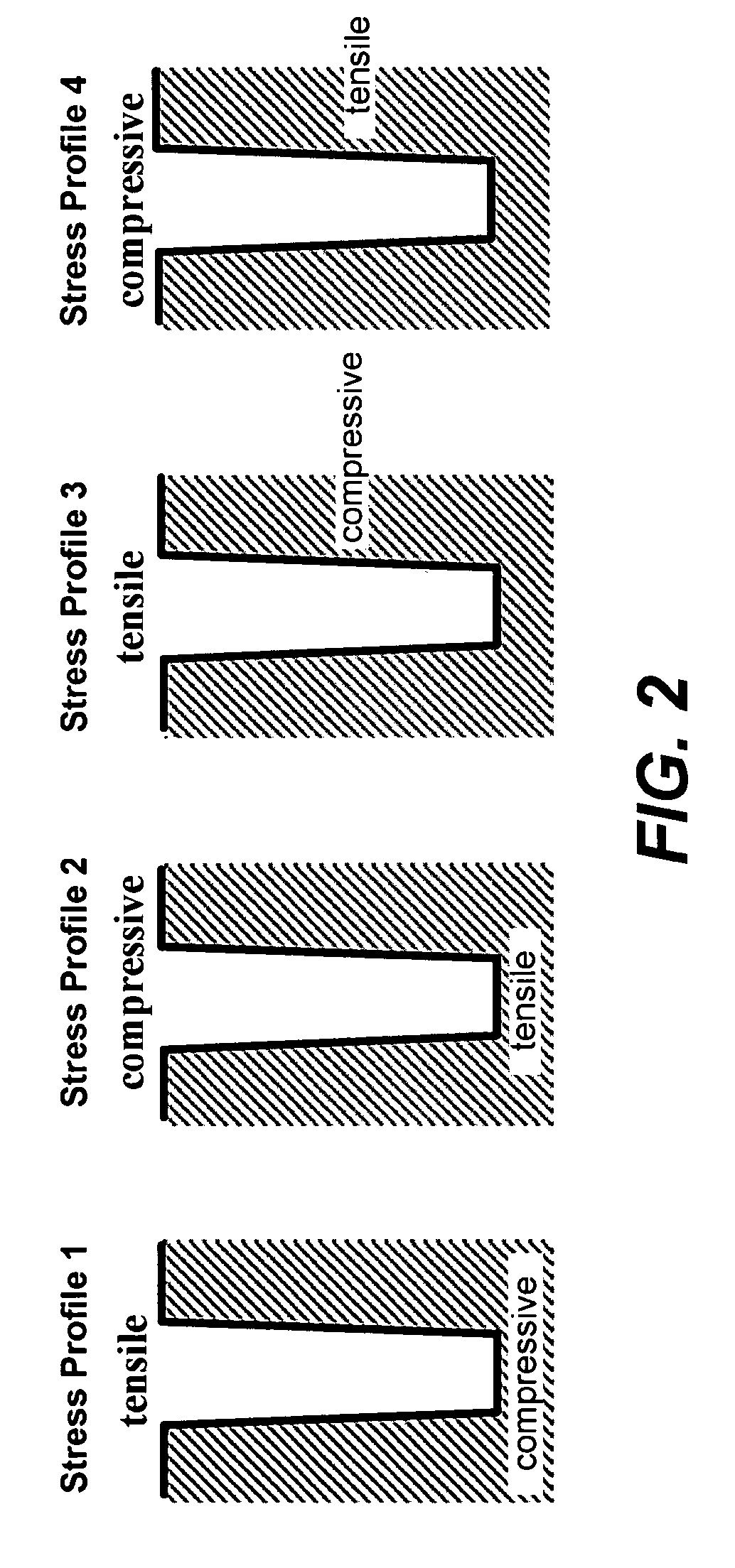Stress profile modulation in STI gap fill
a stress profile and gap filling technology, applied in the field of high density plasma (hdp) deposition techniques, can solve the problems of reducing the effective mass of electrons, consuming too much thermal budget for advanced transistor architectures, and affecting the efficiency of transistor fabrication processes, so as to achieve the effect of not adversely affecting the efficiency of the transistor fabrication process
- Summary
- Abstract
- Description
- Claims
- Application Information
AI Technical Summary
Benefits of technology
Problems solved by technology
Method used
Image
Examples
example
[0069]A series of HDP CVD SiO2 layers were deposited with conditions progressively changed to generate compressive to tensile stress in the resulting composite film. For layer 1, no backside He flow was used and the wafer temperature exceeded 400° C. Six additional layers were applied on the first layer with stepwise increases in the backside He pressure as follows: Layer 2, 1 Torr; layer 3, 2 Torr; layer 4, 3 Torr; layer 5, 4 Torr; layer 6, 5 Torr; and layer 7, 6 Torr. The lower layers exhibited compressive stress while the topmost layers exhibited tensile stress.
PUM
 Login to View More
Login to View More Abstract
Description
Claims
Application Information
 Login to View More
Login to View More - R&D
- Intellectual Property
- Life Sciences
- Materials
- Tech Scout
- Unparalleled Data Quality
- Higher Quality Content
- 60% Fewer Hallucinations
Browse by: Latest US Patents, China's latest patents, Technical Efficacy Thesaurus, Application Domain, Technology Topic, Popular Technical Reports.
© 2025 PatSnap. All rights reserved.Legal|Privacy policy|Modern Slavery Act Transparency Statement|Sitemap|About US| Contact US: help@patsnap.com



